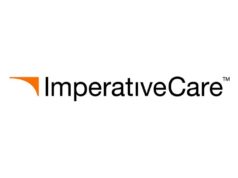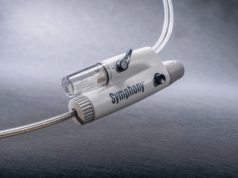![]()
 Imperative Care has today announced that the Zoom stroke system has been further expanded with the launch of the Zoom DuoPort technology, which allows physicians to use the novel continuous dual aspiration technique (CDAT) on two Zoom aspiration catheters simultaneously from a single vacuum source.
Imperative Care has today announced that the Zoom stroke system has been further expanded with the launch of the Zoom DuoPort technology, which allows physicians to use the novel continuous dual aspiration technique (CDAT) on two Zoom aspiration catheters simultaneously from a single vacuum source.
“The launch of CDAT and Zoom DuoPort is the result of our direct partnership with physicians who participated in the Imperative trial and provided feedback on the need to make their procedures more efficient when applying aspiration to two Zoom catheters at the same time,” said Ariel Sutton, general manager of Imperative Care’s stroke business. “We have introduced a full-system approach, starting with arch access and 0.088-inch intracranial access, through complete clot ingestion with asymmetric aspiration. Now, the CDAT approach allows physicians to achieve the benefits of our full system using dual aspiration.”
Earlier this year, the company received US Food and Drug Administration (FDA) 510(k) clearance for its Zoom system, the first comprehensive stroke thrombectomy system to include large-bore 0.088-inch catheters indicated for both access and aspiration when used with a Zoom catheter. In a press release, the company has stated that clinical data from the Imperative trial supporting clearance of the Zoom system showed that dual aspiration with Zoom is fast, effective, and safe in patients with a range of complex anatomies. Now with the introduction of CDAT and Zoom DuoPort, the Zoom system is the first and only system to enable continuous dual aspiration for stroke thrombectomy.
“Data from patients treated with dual aspiration in the Imperative trial demonstrated a 19-minute median case time from groin puncture to mTICI ≥2B reperfusion—the fastest reported time of major prospective mechanical thrombectomy trials. Zoom DuoPort and the CDAT approach elevates the benefits of dual aspiration even further, with the goal of making stroke thrombectomies with the Zoom system faster, easier, and more effective,” Sutton added.
In one of the first cases, performed by Hakeem Shakir (Oklahoma University Health, Oklahoma City, USA), the patient presented with an occlusion of the ICA-terminus. The Zoom VTK insert catheter was used to select the vessel, followed by access with Zoom 88.
Both Zoom 88 and Zoom 71 maintained continuous dual aspiration from a single Zoom Pump, enabled by Zoom DuoPort, which resulted in a first-pass TICI 3 revascularisation with clot captured in the Zoom 88 catheter.
“In this case, a first-pass TICI 3 result was made possible because of the control I was able to achieve with continuous dual aspiration. Without CDAT, an additional pass would likely have been required,” said Shakir. “The CDAT approach using the Zoom System represents a significant clinical advancement in the field of stroke care that allows for continuous aspiration on two catheters and rapid, real-time feedback within the sterile field with Zoom POD. Prior to the introduction of Zoom DuoPort and CDAT, I would have to use two pumps to maintain aspiration, or sacrifice aspiration control with a syringe. In my experience, CDAT is a more common-sense approach to aspiration thrombectomy that streamlines the process, optimises efficiencies and brings me immediate confidence that the stroke-causing clot has been captured.”










